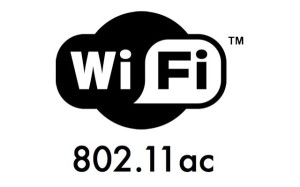 The fifth generation of Wi-fi has arrived, and it has left organisations with the decision of whether to transition to the newer, faster, wireless networking standard.
The fifth generation of Wi-fi has arrived, and it has left organisations with the decision of whether to transition to the newer, faster, wireless networking standard.
Enterprise mobility firm Wavelink’s managing director, Ilan Rubin believes there are five signs your company is ready to deploy 802.11ac – the next generation of wireless connectivity.
The first is if you are planning to expand your wireless network coverage.
“Whether it’s by adding an access point to fill in a coverage hole or expand to cover a new area, the question of whether to deploy 802.11n or 802.11ac is straightforward,” he said.
“802.11ac equipment is backward compatible with 802.11n. This means you can deploy an 802.11ac access point (AP) and 802.11n clients will have the same coverage and capacity as with an 802.11n AP.”
Rubin said the new standard would allow higher data rates.
“From a technical perspective there is no disadvantage to deploying to 802.11ac and the price difference is fairly small,” he said.
According to Rubin, if you have deployed 802.11n in the 5 GHz band with 40 MHz channels then your maximum data rate is probably around 450 Mbps.
But not all users can get this data rate.
Users in good radio frequency (RF) conditions get higher data rates and user in poorer RF conditions get lower data rates.
“Let’s assume your users are evenly distributed over the coverage area and getting 200 Mbps on average,” Rubin said.
“Let’s also assume a moderate level of video streaming and that you can take advantage of frame aggregation.Your maximum throughput per 802.11n AP would be 70 per cent of 200 Mbps. If your traffic throughput requirement per AP is greater than 140 Mbps in the next year you should definitely consider transitioning to 802.11ac to meet these demands.
“If your annual growth rate for wireless traffic is 20 per cent and your traffic is currently close to 117 Mbps (140Mbps/120 per cent), you should plan to upgrade all or part of your wireless network to 802.11ac in the next few months.”
The introduction of MIMO (multiple input output) means data can be simultaneously transmitted on multiple antennas in the same frequency channel. Most enterprise-grade APs have three antennas, which lets these devices transmit at data rates of up to 450 Mbps.
Unfortunately deploying three transmitting antennas in client devices is problematic because of the physical limitations on placing three handheld antennas in small handheld devices and because transmitting on three antennas draws significant power from the battery, he said.
For these reasons, manufacturers limit the number of antennas in handheld equipment to one or two.
Rubin said the major advantage of 802.11ac was that it almost triples the data rate for effectively the same handset power use.
“In environments that have high data rate applications but also require handheld devices to last a full working day 802.11ac has significant advantages,” he said.
“If you are in a highly mobile environment such as education, medical or construction the power advantages can bring significant benefits to your organisation.”
Rubin said that if your organisation needs high-bandwidth applications to work, even on the edge of cell coverage, then 802.11ac with explicit beamforming is the best solution today.
“Before you make the final decision to deploy 802.11ac you need to make sure that your RF environment will support the deployment of wider channels,” he said.
“Every RF environment is different and the only way to really answer this questions is with a site survey by a professional wireless installer.”





